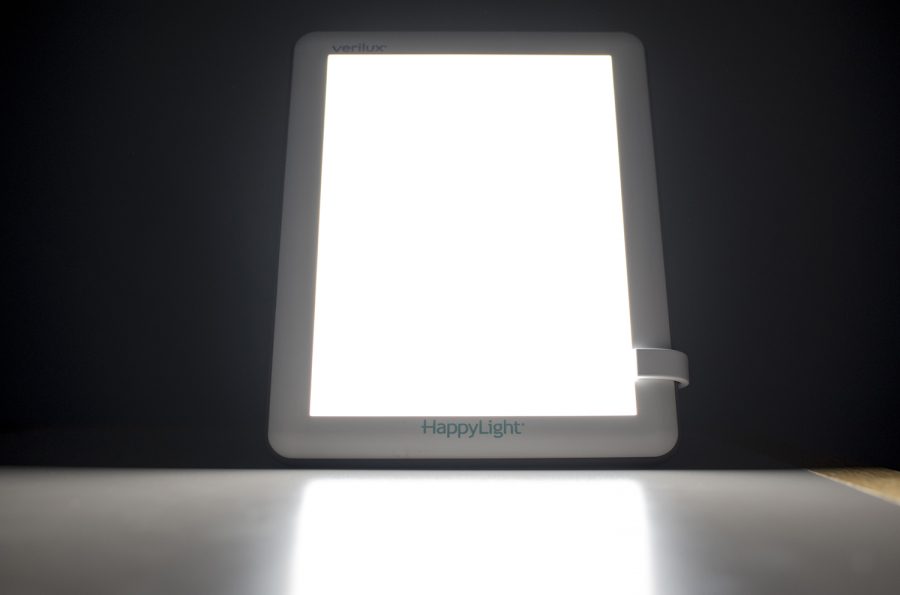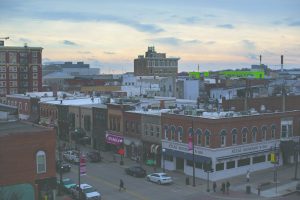Tietz: There are resources for UI students who may suffer from seasonal depression
As spring has sprung here in Iowa, I reflect on the harsh winter and its effects on mental health.
A HappyLight is seen on Monday, Nov. 5, 2018. The light helps with seasonal depression.
April 25, 2019
The Iowa City population seemed to have increased threefold as the temperatures rise and the sun emerges. More people are around, picnicking on the Pentacrest and eating on the terraces of the restaurants. Everyone is enjoying a much-awaited spring after months of harsh temperatures and frequent snow.
Noticing a better mood and more energy in me and others has made me wonder about the effects of the seasons on mental health — especially for college students. I have suffered from seasonal affective disorder for many years now, and I think with the additional stress college students endure, it is extremely important to be aware and proactive about our mental health as the seasons change.
The disorder is a certain type of depression that is specifically brought on by the change in season. Mayo Clinic states that it is commonly dismissed as winter blues, because it can be prevalent during the fall and winter months. Some common symptoms of the disorder are having low energy, feeling depressed most of the time, experiencing changes in appetite, and experiencing an overall feeling of sluggishness during the months in which the disorder is prevalent.
As someone whom this disorder has affected, I wondered how much the University of Iowa has done to address this disorder among affected students. No cures for seasonal affective disorder have been found, but some treatments that have had success in relieving some of the intense symptoms, including light therapy and psychotherapy.
RELATED: McComas: Mental Health Education needs more grip to pull through the Iowa legislature
“SAD can get in the way feeling like your best self,” said Patrick Rossmann, who oversees the Light Therapy Program at UI Student Health and Wellness. “SAD affects people differently, but often the symptoms affect your energy level and mood. This can make the winter months an extra challenge on top of other college responsibilities.”
Light therapy, Rossmann said, “is one way to respond [to the disorder] through exposure to artificial light. Light therapy is thought to affect the chemicals in our brain linked to mood and sleep, which help ease the symptoms of SAD. During light therapy, you sit or work near a device called a light-therapy box. The light box provides a measured amount of balanced spectrum light equivalent to standing outdoors on a clear spring day. For best results, it’s recommended that it’s used consistently over time.”
He said light therapy’s effectiveness may vary by person and noted it should be used with some caution but is available without a prescription or medication.
For students seeking resources for seasonal-depressive tendencies, Rossmann advises checking out a light-therapy box from Student Wellness or University Counseling Service, free of charge. “We’ve been assessing the program’s effectiveness through a pre- and post-survey. The results have been encouraging in reducing SAD symptoms, and the majority of students who have done light therapy have found it helpful,” he said.
RELATED: McComas: Candidates need to focus more on mental health
It is comforting to know that there are resources available to people like me during months in which mental health seems to be at an all-time low. Seasonal affective disorder can take a great toll on a person’s ability to function. As a student with stressful classes, work, internships, and extracurriculars, feeling extra low and sluggish has made getting through dark and cold days extremely difficult. It is vital to be aware of the symptoms people can experience during the winter months and to bring awareness to a common but serious mental-health problem.






